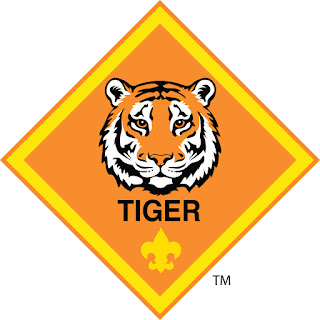The pack normally meets at Mission San Jose Elementary School (Fremont)
Date : MSJE MUR [check calendar for Pack Meeting], Every Month Second Wednesday 6:30PM - 8 PM
A den is a group of 4-8 Cub scouts (boys and girls), within the pack, that
meets several times a month between pack meetings. The scouts in a den are
usually all at the same grade level. The den structure allows cub scouts
to build relationships with leaders and other cub scouts. It provides
opportunities for activities that would be difficult with a large group.
The den also provides leadership opportunities for the cub scouts.
Den Meeting Attendance
The den leader and assistant den leader (or another adult) attend all den
meetings with the Cub Scouts. (At least two adults must be present at all
meetings.) Tiger den meetings are also attended by each Tiger's adult
partner. Wolf, Bear, and Webelos den meetings are often attended by a den
chief, Sea Scout, or Venturer who assists the adult
leaders. Sometimes, a parent, guardian, or other family member might
be asked to help at a specific meeting, but family members do not normally
attend Wolf, Bear, or Webelos den meetings.
The Den Meeting Agenda
All Cub Scout den meetings have the following parts:-
Preparation and Materials Needed. Before the Cub Scouts arrive, leaders gather to make preparations and handle last-minute details.
-
Gathering. As the Cub Scouts begin to arrive, they join in an informal activity or game, often conducted by the den chief to keep the cub scouts interested and active until the entire group has arrived.
-
Opening. The Opening is the official start of the den meeting. It usually consists of a formal ceremony, such as a flag ceremony, a prayer or song, or a group recital of the Cub Scout Promise.
-
Talk Time. This is where the business items of the den take place. Business items can include dues, recording advancement, notification of upcoming events, introducing a new adventure, and other items. Talk Time should be brief so the den can get right to the fun of the meeting.
-
Activities. The Activities part of the meeting will vary by the age of the cub scouts (see below), and may be broken into two or more parts. Generally, most of the meeting consists of craft projects, games, and activities that are all based on the current adventure.
-
Closing. The Closing draws the meeting to an end. It's usually serious and quiet. Den leaders could present a thought for the day or give reminders about coming events.
-
After the Meeting. The leaders review the events of the meeting, finalize plans for the next den meeting, and review their progress toward the upcoming pack meeting.
Different kind of dens
-
Lions
- Tigers
- Wolfs
- Bears
- WeBeLos
-
Arrow of Light
Purposes and Methods of Cub Scouting
Every Cub Scouting activity should help fulfill one of these purposes. When considering a new activity, ask which purpose or purposes it supports. Not everything in Cub Scouting has to be serious – far from it! Silly songs, energetic games, and yummy snacks all have their place in the program.The Methods of Cub Scouting
To accomplish its purposes and achieve the overall goals of building character, learning citizenship, and developing personal fitness, Cub Scouting uses seven methods:
1. Living the Ideals
Cub Scouting’s values are embedded in the Scout Oath, the Scout Law, the Cub Scout motto, and the Cub Scout sign, handshake, and salute. These practices help establish and reinforce the program’s values in cub scouts and the leaders who guide them.
2. Belonging to a Den
The den—a group of 4-8 cub scouts(boys and girls) who are about the same age—is the place where Cub Scouting starts. In the den, Cub Scouts develop new skills and interests, they practice sportsmanship and good citizenship, and they learn to do their best, not just for themselves but for the den as well.
3. Using Advancement
Recognition is important to cub scouts. The advancement plan provides fun for the cub scouts, gives them a sense of personal achievement as they earn badges, and strengthens family understanding as adult family members and their den leader work with cub scouts on advancement projects.
4. Involving Family and Home
Whether a Cub Scout lives with two parents or one, a foster family, or other relatives, his family is an important part of Cub Scouting. Parents and adult family members provide leadership and support for Cub Scouting and help ensure that cub scouts have a good experience in the program.
5. Participating in Activities
Cub Scouts participate in a huge array of activities, including games, projects, skits, stunts, songs, outdoor activities, trips and service projects. Besides being fun, these activities offer opportunities for growth, achievement, and family involvement.
6. Serving Home and Neighborhood
Cub Scouting focuses on the home and neighborhood. It helps cub scouts strengthen connections to their local communities, which in turn support the cub scouts’ growth and development.
7. Wearing the Uniform
Cub Scout uniforms serve a dual purpose, demonstrating membership in the group (everyone is dressed alike) and individual achievement (cub scouts wear the badges they’ve earned). Wearing the uniform to meetings and activities also encourages a neat appearance, a sense of belonging, and good behavior.





